Introduction
- This is an unclassified briefing on the military transition on how the transition is carried from combat to garrison
- The purpose of the briefing is to expound on how the military transition from combat to garrison has and is being conducted and the type of leadership style works best during the transition period.
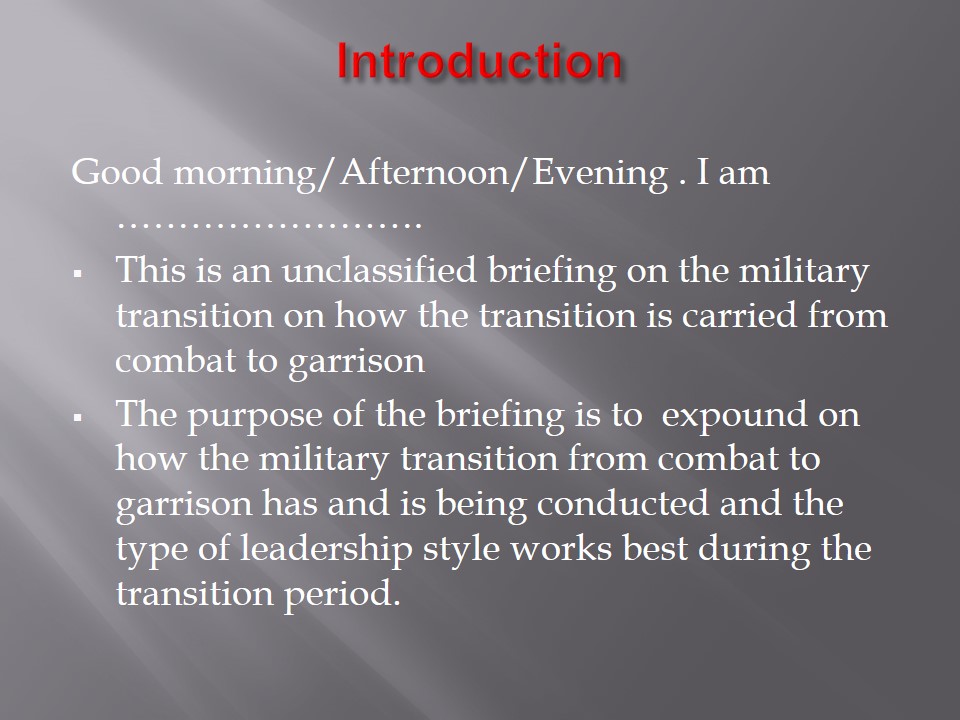
Transition from Combat to Garrison
- The transition from combat to Garrison is usually headed by unit commanders‘.
- After being gathered, each members goes to their respective battalions.
- Historically the procedure has been recruit soldiers whose major job is to prepare the rest for combat deployment.
- The transition from combat to garrison is aimed to give Soldiers time to relax and unwind from deployment stress.
- The transition is conducted ensures that the combat soldiers who can no longer withstand the field operations and not ready remain in garrison.
- The garrison soldiers only stay around the camps where they spend most of the time freely (Lieblich, 1989).
- The transition selects peacetime soldiers, mechanics, policemen, drivers, signal technicians, and medical men whose major mission is to keep readiness for deployment purposes (Lieblich, 1989).
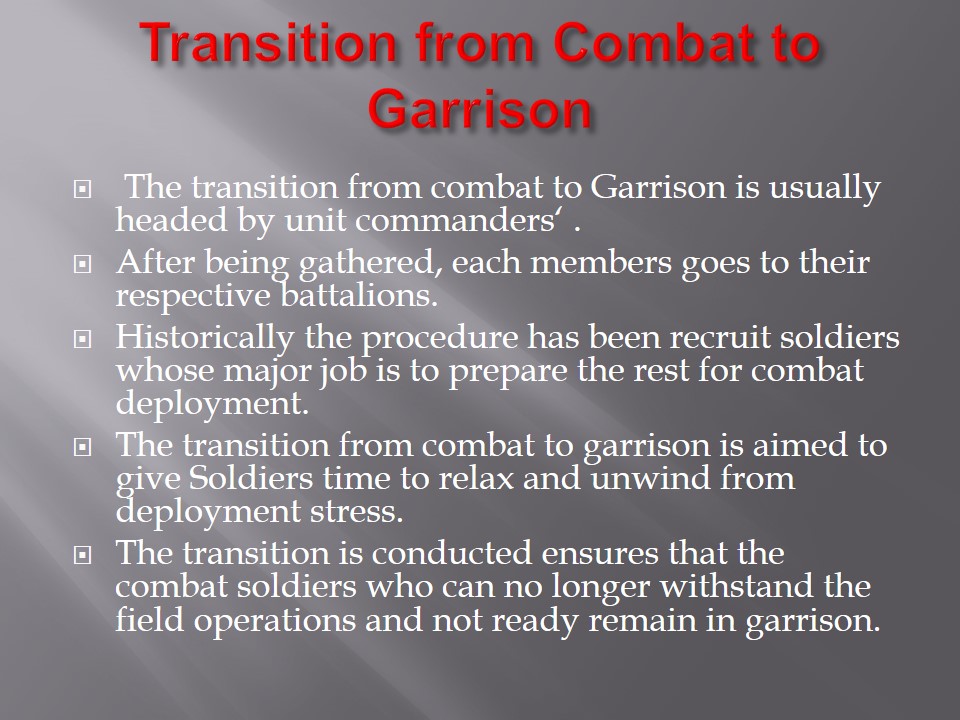

Leaders involved in the transition process Arising issues
The following leaders are involved in ensuring that the transition period is carried out effectively.
- Platoon sergeants.
- Colonels.
- Unit commandants.
- Head of the battalions.
- Sergeants.
- And other leaders concerned with military leadership.
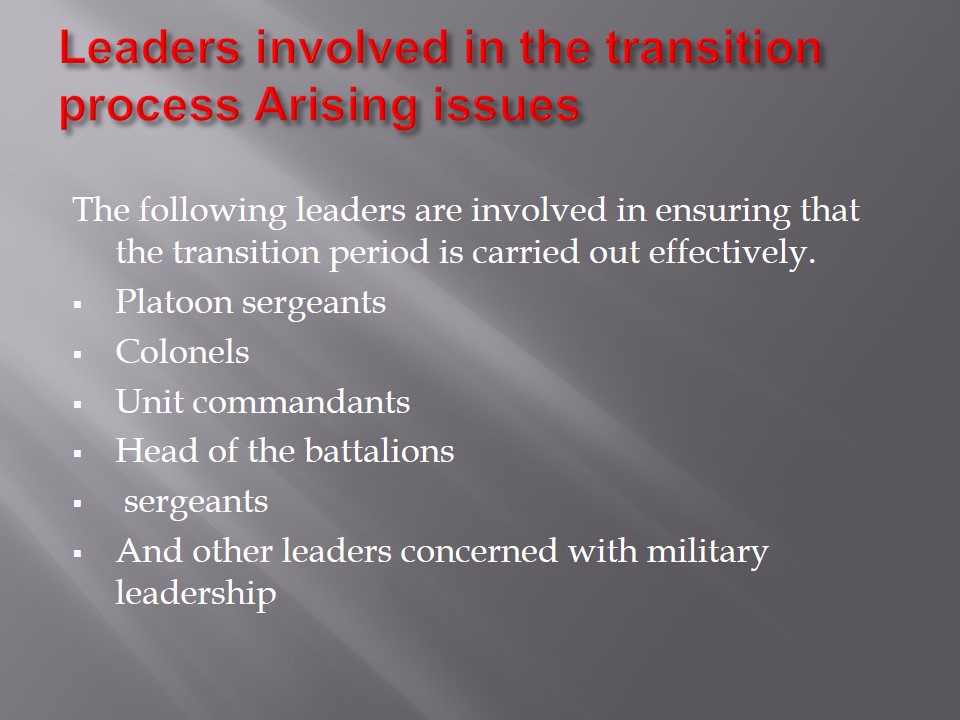
Arising issues
The following issues that arise while dealing with the transitional change.
- Military members in the garrisons are associated with alcohol and drugs abuse (Flotte, 1989).
- Some are found to have stress and post war physiological and psychological trauma.
- There has been reports of domestic violence especially wife battery.
- There are incidents of sexual harassments among the junior and the senior officers.
- Rejection of change especially the wounded soldiers demanding to remain in combat despite their physical conditions.
- There incidents of child abuse basically as a result of war stress and experience (Flotte, 1989).
- Stealing of other garrison members utilities.
- Sexual, racial, ethnic, religion, and color discrimination among others.
- Fraternization issues among all sexes and all ranks in the military.
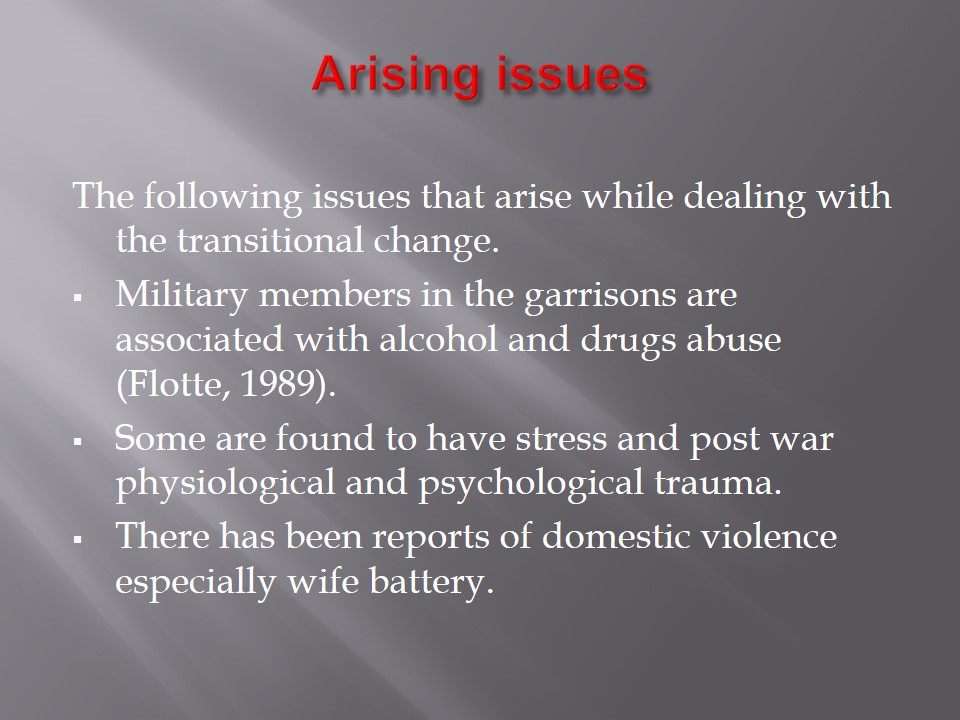
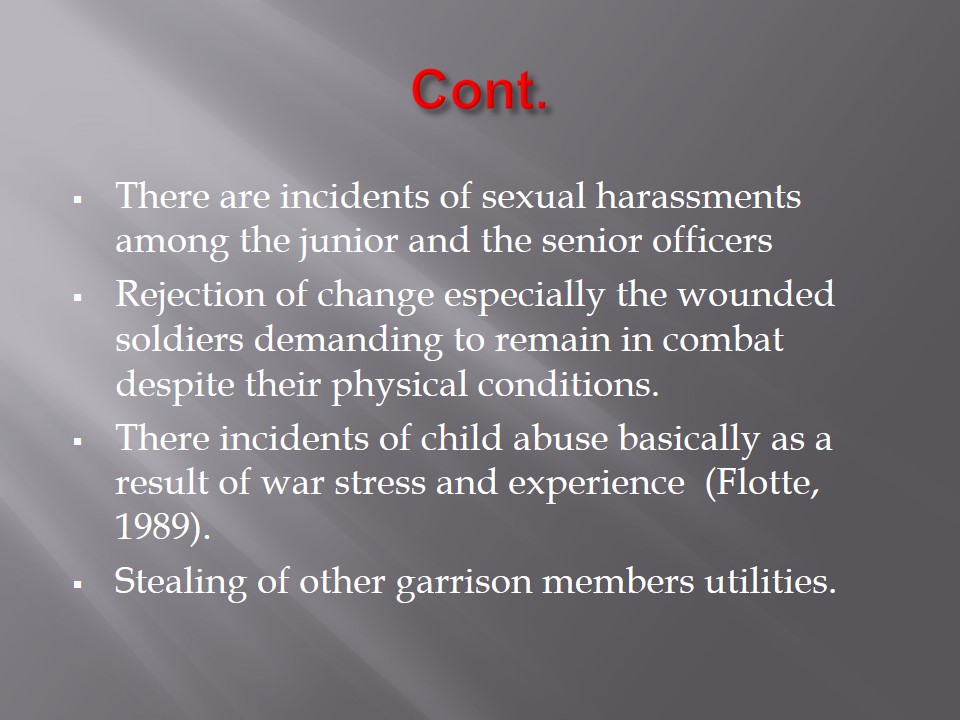

Ways in which the branch is addressing the issues
- There has been vigorous educational programs and counseling among the military to assist military officers with either marital or spousal issues.
- Policies have been put into place to ensure that all officers are treated without prejudice and fairly (Flotte, 1989).
- Officers have been treated with respect to avoid incidents of discriminations.
- Counseling programs have been instituted to ensure that child abuse among the marine corps is reduced.
- Initiation of drug abuse educational programs to clarify what drug abuse is and effects that it cause on personal welfare (Flotte, 1989).
- There has been educational programs geared towards educating the battalion or unit leaders on how to deal with the various issues with the soldiers.
- Military penalties to the wayward officers in garrison are required by the Uniform Code of Military Justice (Flotte, 1989).
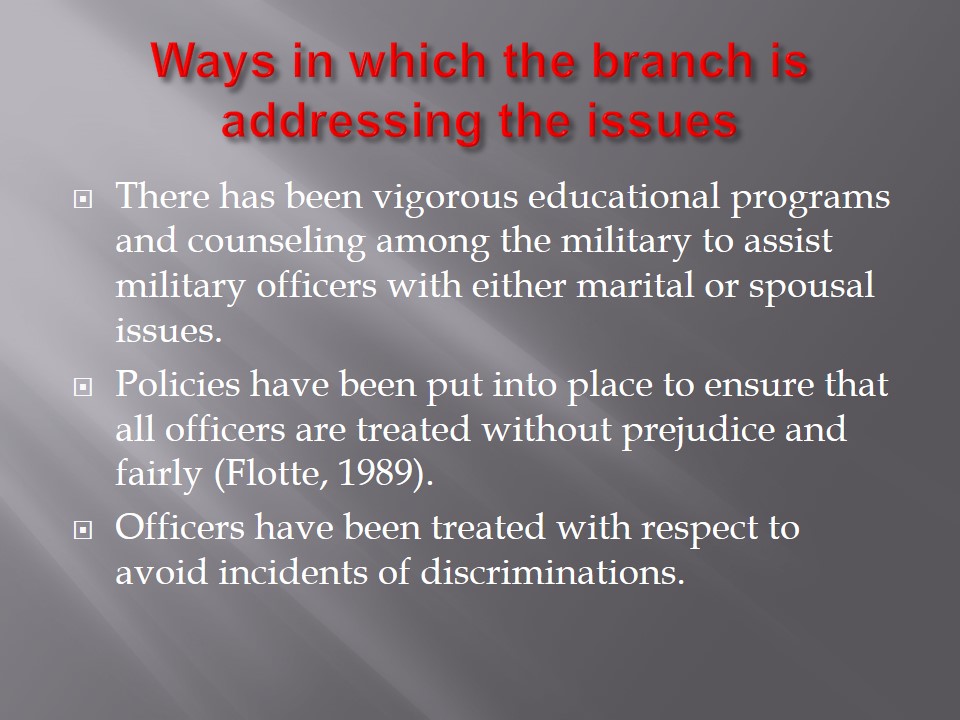
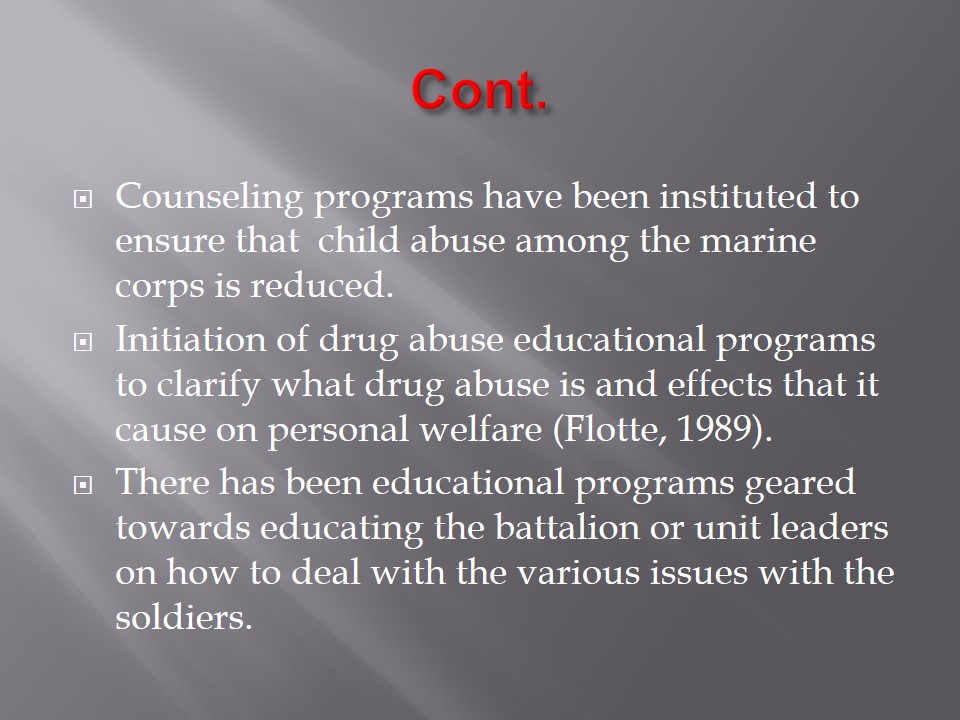
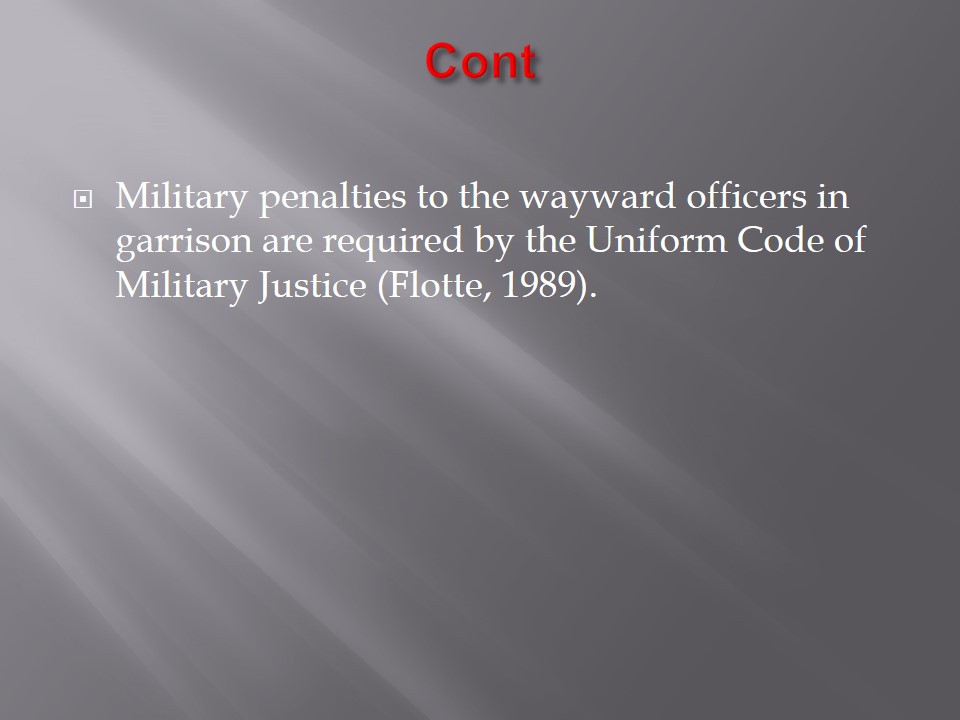
Leadership styles applied for the change
- Military is usually headed through multi-level leadership model.
- The orders come from above downwards.
- Although the unit commanders are sometimes faced with problems from the officers face-to- face communication is applied (Wong et al., 2003).
- This kind of leadership ensures that proper communication and understanding around the garrison.
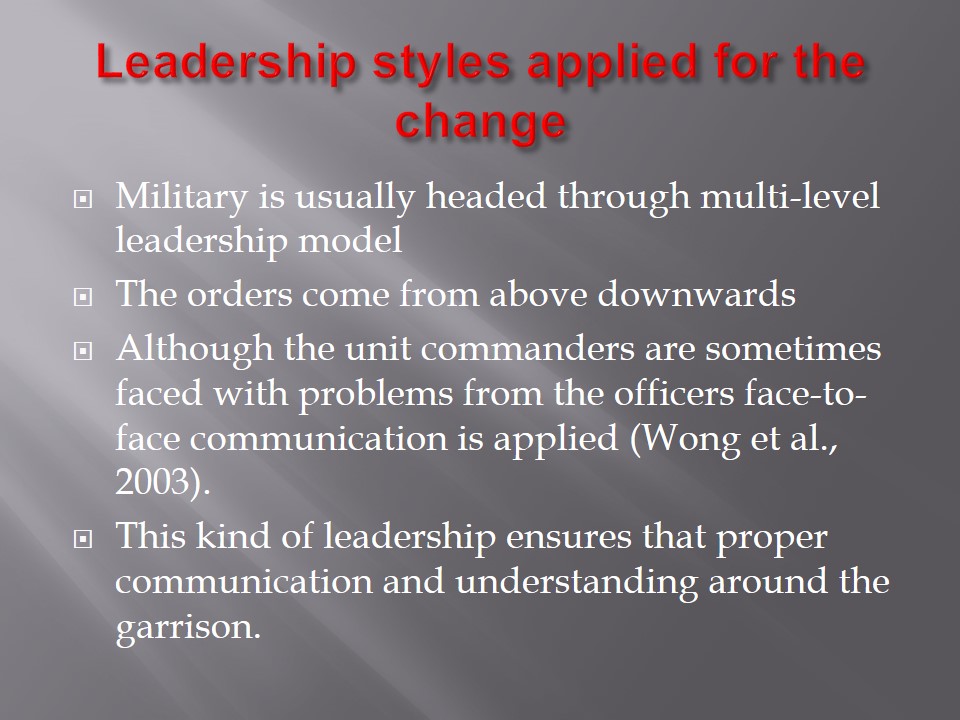
Suggestions for addressing the issues
The following are recommendations that could be applied in solving the issues facing the military in garrison.
- Initiating proper policies that would safeguard the military officers welfare in the garrisons.
- Strengthen the guidance and counseling programs to help marine corps members with family and child abuse issues.
- Instill leadership programs that would educate the unit commanders on how to deal with military issues in garrison.
- Educate the soldiers on the consequences of alcohol and substance abuse.
- Establish a leadership programs to subordinates to increase knowledge and confidence among the officers.
The solutions can be implemented through educational programs in the various garrison centers to instill peace and understanding.
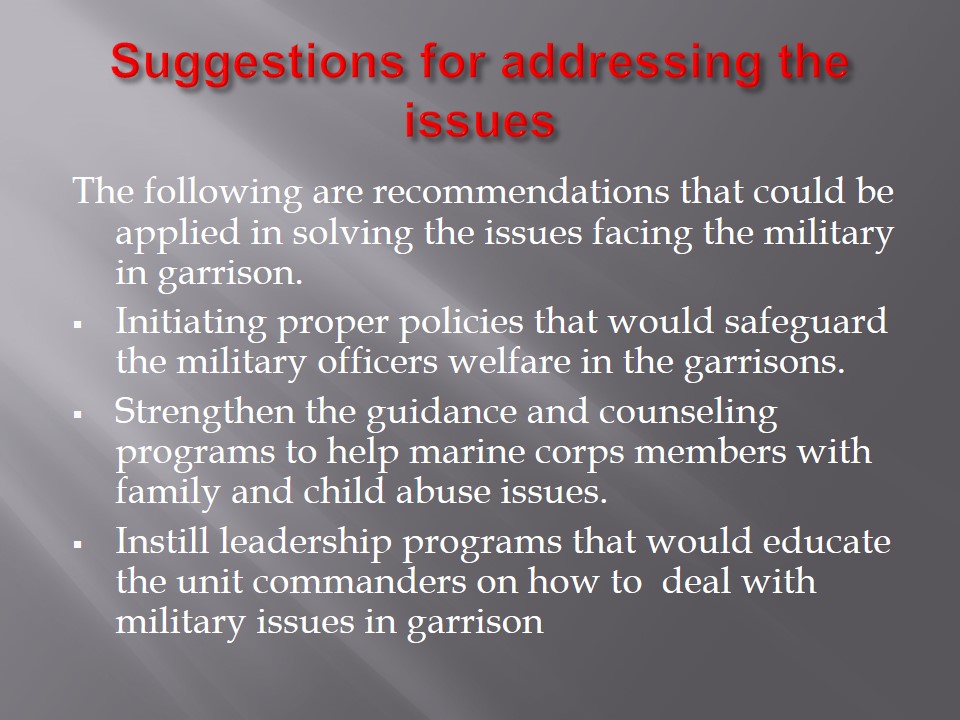
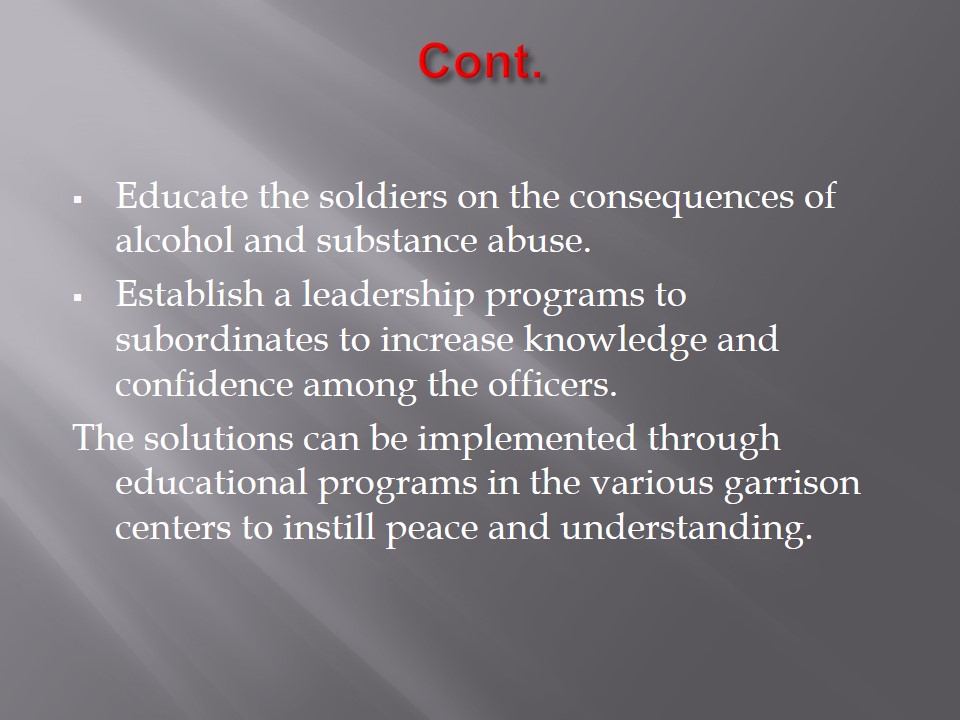
Summary and Conclusion
- Multilevel leadership is applied in military but the most appropriate during the transition is the face to face leadership.
- The issues that arise in the garrison can be addressed through educational and educational programs.
- Most the issues that arise are based on stress and psychological trauma as a result of war.
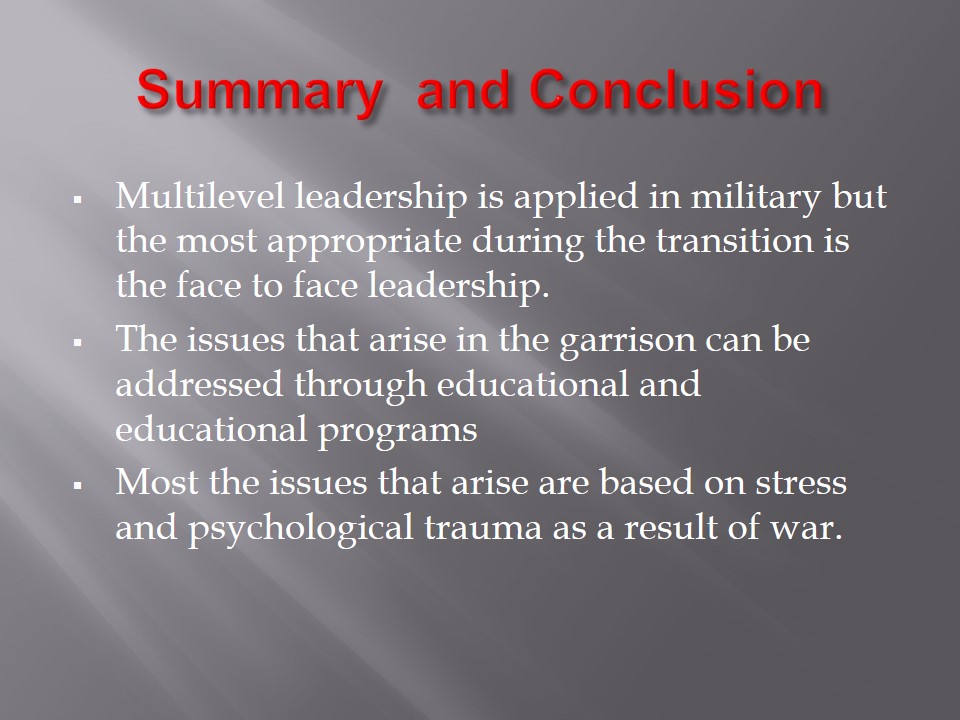
Q/A
- Thank you all for attending and listening the briefing.
- All are welcome to ask any relevant question in regard to the military transition from combat to garrison.

Reference List
- Flotte, G. J. (1989). Peacetime combat in garrison. Global Security. Web.
- Lieblich, A. (1989). Transition to adulthood during military service: The Israel case. Albany: State University of New York Press.
- Wong, L., Bliese, P., & McGurk, D. (2003). Military leadership: A concept specific review. The Leadership Quarterly,14(6), 657.